Copyright 2000 by Gerald Bowler
All rights reserved. The use of any part of this publication reproduced, transmitted in any form or by any means, electronic, mechanical, photocopying, recording, or otherwise, or stored in a retrieval system, without the prior written consent of the publisher or, in case of photocopying or other reprographic copying, a licence from the Canadian Copyright Licensing Agency is an infringement of the copyright law.
Canadian Cataloguing in Publication Data
Bowler, Gerald, 1948
The world encyclopedia of Christmas
eISBN: 978-1-55199-607-3
1. Christmas Encyclopedias. I. Title.
GT 4985. B 68 2000 394.266303 C 00-931247-1
We acknowledge the financial support of the Government of Canada through the Book Publishing Industry Development Program for our publishing activities. We further acknowledge the support of the Canada Council for the Arts and the Ontario Arts Council for our publishing program.
Every effort has been made to secure permission to reproduce copyrighted material in this book. Should any error or omission have been made, please notify the publisher and the information will be corrected with the next printing. constitutes a continuation of the copyright page.
McClelland & Stewart Ltd.
The Canadian Publishers
75 Sherbourne Street,
Toronto, Ontario
M 5 A 2 P 9
www.mcclelland.com
v3.1
This book is dedicated to my parents, Gerald and Elva Bowler,
who first showed me the wonders of Christmas.
Contents
Acknowledgements
 he arts and sciences, says Montaigne, are not cast in a mould, but are formed and perfected by degrees, by often handling and polishing, as bears leisurely lick their cubs into form. This book has been licked into shape with the aid of many whose assistance it is now a pleasure to acknowledge. This work began as a little offering for a Christmas party at the home of John and Kari Stackhouse. John was the first to suggest that a book was waiting to be written on all things Christmassy and has been a supporter of the project from the beginning; without his encouragement at key moments it might not have continued. My family has been no less supportive: Karen, Amy, Kate, and Maria have all contributed and sacrificed in numerous ways in order that this encyclopedia be completed.
he arts and sciences, says Montaigne, are not cast in a mould, but are formed and perfected by degrees, by often handling and polishing, as bears leisurely lick their cubs into form. This book has been licked into shape with the aid of many whose assistance it is now a pleasure to acknowledge. This work began as a little offering for a Christmas party at the home of John and Kari Stackhouse. John was the first to suggest that a book was waiting to be written on all things Christmassy and has been a supporter of the project from the beginning; without his encouragement at key moments it might not have continued. My family has been no less supportive: Karen, Amy, Kate, and Maria have all contributed and sacrificed in numerous ways in order that this encyclopedia be completed.
The embassies and tourist bureaus of the following countries were helpful in providing information on national Christmas customs: Argentina, Armenia, Belgium, Chile, Croatia, Denmark, the Czech Republic, Germany, Jamaica, Luxembourg, Malta, Philippines, Russia, Sweden, Switzerland, and Venezuela.
Many kind people from around the world took time to answer my questions. Thanks are due to Mama Andromeda for information on the Christmas music of Puerto Rico; Javier de Baraka for Christmas in the Basque country; Brother Carl D. Bartholomew and Father Murray Watson for Roman Catholic practices; Reverend Wil Bloy for Hebridean customs; Marcelo Bruno for Christmas in Brazil; Debbie Haughland Chan and the indefatigable internet newsgroup norwaylist for Christmas in Norway; Dr. Terry Galloway for Christmas beetles; Hilda Gharamani and Waleed and Wendy Yousif for Christmas in the Middle East; David Goss for Maritime Christmas customs; Hardy Kleinsasser and Mark Waldner for Christmas among the Hutterites; Derek Liebenberg and Pat and Len McBeath for Christmas in South Africa; David Meadows for Roman history; Flori Mihailescu for Christmas in Romania; Serge Moes for Christmas in Luxembourg; Dale Hoyt Palfrey for the posadas ceremony; Christine Pavacic and WPIX-TV for the televised Yule log; Don Smith, Linda Richards, and the members of the internet newsgroup rec.collecting.postal-history for help with Christmas postage stamps; Dr. Eduard Schludermann for Christmas in Austria and Germany; Alvin Suderman for Christmas in Scotland; and Michael D. Toth, Linda Dalglesh, and Kate Bowler were the most resourceful of research assistants.
Special thanks are owed to Canadian Nazarene University College of Calgary and its librarian Carolyn Alho for ordering Christmas material to support my research.
Finally, I must extend my sincere gratitude to Guy Vanderhaeghe and Doug Gibson for getting McClelland & Stewart interested in this project and Alex Schultz, deftest of editors.
Introduction
 n the Czech Republic a child gazes at a carp swimming in her bath tub; in Portugal a man is trying to make a turkey drunk. In Ethiopia men are shouting and waving hockey sticks; in New Zealand a family is barbecuing on the beach. In Denmark they are lighting a candle, while in Mexico they are strolling behind a young couple searching for a place to stay. In Austria costumed figures are driving demons away with brooms, while in Canada warmly dressed singers are trudging door to door through the snow. In Japan someone is reserving a table at an expensive restaurant, while in China someone is reserving a seat in a cathedral. Children everywhere are yearning for the annual visit of Santa Claus, Father Christmas, Mother Goody, Grandfather Frost, Pre Nol, Befana, Baboushka, Saint Nicholas, or the Old Lady of Bethlehem. A myriad of different activities indicates that it is Christmas time on planet Earth.
n the Czech Republic a child gazes at a carp swimming in her bath tub; in Portugal a man is trying to make a turkey drunk. In Ethiopia men are shouting and waving hockey sticks; in New Zealand a family is barbecuing on the beach. In Denmark they are lighting a candle, while in Mexico they are strolling behind a young couple searching for a place to stay. In Austria costumed figures are driving demons away with brooms, while in Canada warmly dressed singers are trudging door to door through the snow. In Japan someone is reserving a table at an expensive restaurant, while in China someone is reserving a seat in a cathedral. Children everywhere are yearning for the annual visit of Santa Claus, Father Christmas, Mother Goody, Grandfather Frost, Pre Nol, Befana, Baboushka, Saint Nicholas, or the Old Lady of Bethlehem. A myriad of different activities indicates that it is Christmas time on planet Earth.
There can be no doubt that Christmas is the worlds most popular holiday. It is celebrated on every continent, by Christians for whom it is the second most sacred date on the calendar, and by increasing numbers of people of other faiths and folk with no religious faith at all. Stores specializing in Christmas items now do business all year round; Christmas buying fuels much of the industrialized economy; and every year the festival penetrates new cultures, accruing new meanings and importance.
All over the world, the month of December is scarcely long enough to prepare for all that must be done: baking, cooking, shopping, brewing, wrapping, rehearsing, travelling, decorating, writing, meditating, fasting, and hoping. All around the world people will mark the occasion with celebration: eating, drinking, spending, parading, praying, playing, singing, dancing, gathering, and giving. And what a host of symbols has accumulated about this holy and merry time: bells, stars, snowmen, elves, robins, lights, logs, holly, ivy, gingerbread men, prune people, candy canes, evergreen trees, goats, oxen, asses, camels, reindeer, fat men in red suits, angels, shepherds, weary astrologer-kings, a Virgin, and a baby in a makeshift cradle.
Christmas could not have gained or maintained this astonishing hold on peoples lives if it had not developed a number of important, and differing, meanings and claims over time. Its original meaning and still its deepest was the celebration of the birth of the baby Jesus in Bethlehem and the solemnities surrounding the profound mysteries by which God took on human form. Marking this event would require of believers two distinct attitudes of the heart: the disciplined preparation that would grow into the season of Advent, and the festive joy that would become the Twelve Days of Christmas.
From its earliest days, Christmas took on different aspects and was a holiday whose meaning could shift with time and place. Centuries of complaints by church councils and reformers attest to the tension between the demands of a sacred season and those of a midwinter festival. At times celebrations have been centred on the whole community, with Christmas coming to stand for neighbourliness and hospitality; at other times the emphasis was on the individual family. In various countries the focus will be on outdoor worship and merriment; in others Christmas is kept indoors. The holiday has stood for international good will, and on the other hand, as in Soviet Eastern Europe, for national identity and resistance. It has been child-centred and adult-centred; alcohol-centred and toy-centred; raucous and domestic; holy and profane. Everywhere, however, and at all times, it has been the season of miracle and surprise, the time closest to the hearts of the people who keep it.




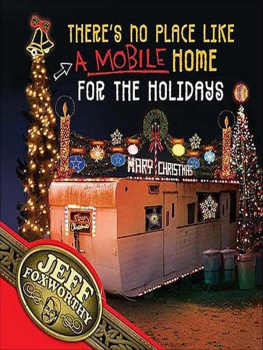
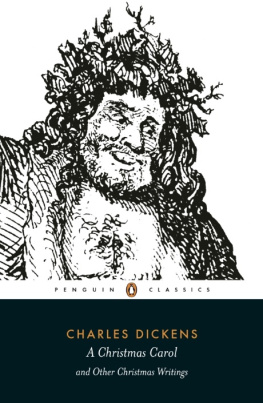
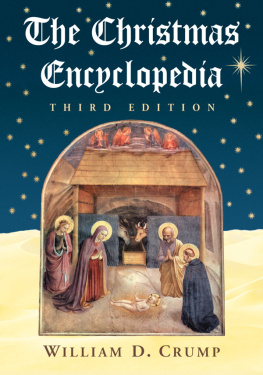
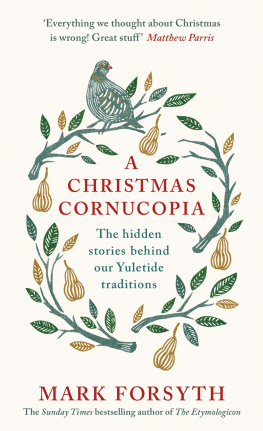
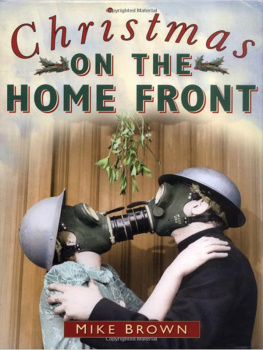
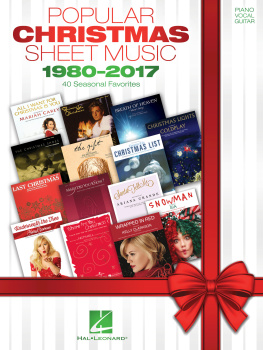
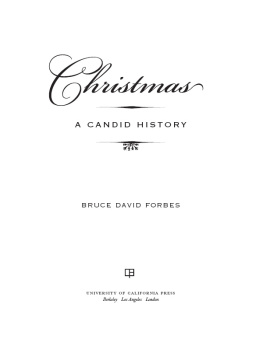


 he arts and sciences, says Montaigne, are not cast in a mould, but are formed and perfected by degrees, by often handling and polishing, as bears leisurely lick their cubs into form. This book has been licked into shape with the aid of many whose assistance it is now a pleasure to acknowledge. This work began as a little offering for a Christmas party at the home of John and Kari Stackhouse. John was the first to suggest that a book was waiting to be written on all things Christmassy and has been a supporter of the project from the beginning; without his encouragement at key moments it might not have continued. My family has been no less supportive: Karen, Amy, Kate, and Maria have all contributed and sacrificed in numerous ways in order that this encyclopedia be completed.
he arts and sciences, says Montaigne, are not cast in a mould, but are formed and perfected by degrees, by often handling and polishing, as bears leisurely lick their cubs into form. This book has been licked into shape with the aid of many whose assistance it is now a pleasure to acknowledge. This work began as a little offering for a Christmas party at the home of John and Kari Stackhouse. John was the first to suggest that a book was waiting to be written on all things Christmassy and has been a supporter of the project from the beginning; without his encouragement at key moments it might not have continued. My family has been no less supportive: Karen, Amy, Kate, and Maria have all contributed and sacrificed in numerous ways in order that this encyclopedia be completed. n the Czech Republic a child gazes at a carp swimming in her bath tub; in Portugal a man is trying to make a turkey drunk. In Ethiopia men are shouting and waving hockey sticks; in New Zealand a family is barbecuing on the beach. In Denmark they are lighting a candle, while in Mexico they are strolling behind a young couple searching for a place to stay. In Austria costumed figures are driving demons away with brooms, while in Canada warmly dressed singers are trudging door to door through the snow. In Japan someone is reserving a table at an expensive restaurant, while in China someone is reserving a seat in a cathedral. Children everywhere are yearning for the annual visit of Santa Claus, Father Christmas, Mother Goody, Grandfather Frost, Pre Nol, Befana, Baboushka, Saint Nicholas, or the Old Lady of Bethlehem. A myriad of different activities indicates that it is Christmas time on planet Earth.
n the Czech Republic a child gazes at a carp swimming in her bath tub; in Portugal a man is trying to make a turkey drunk. In Ethiopia men are shouting and waving hockey sticks; in New Zealand a family is barbecuing on the beach. In Denmark they are lighting a candle, while in Mexico they are strolling behind a young couple searching for a place to stay. In Austria costumed figures are driving demons away with brooms, while in Canada warmly dressed singers are trudging door to door through the snow. In Japan someone is reserving a table at an expensive restaurant, while in China someone is reserving a seat in a cathedral. Children everywhere are yearning for the annual visit of Santa Claus, Father Christmas, Mother Goody, Grandfather Frost, Pre Nol, Befana, Baboushka, Saint Nicholas, or the Old Lady of Bethlehem. A myriad of different activities indicates that it is Christmas time on planet Earth.